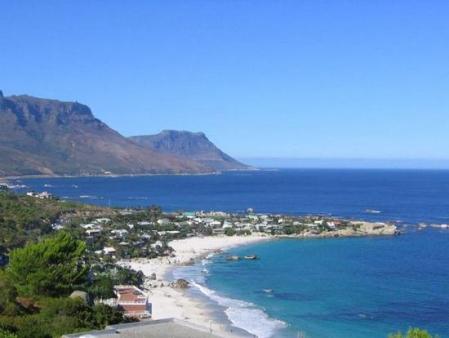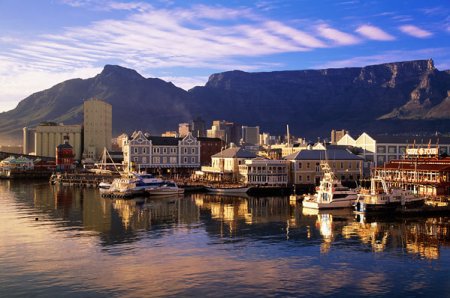Cape Town is the most popular international tourist destination in
South Africa due to its good climate, natural setting, and relatively
well-developed infrastructure.
The city has several well-known natural features that attract
tourists, most notably Table Mountain, which forms a large part of the
Table Mountain National Park and is the back end of the City Bowl.
Reaching the top of the mountain can be achieved either by hiking up, or
by taking the Table Mountain Cableway. Cape Point is recognised as the
dramatic headland at the end of the Cape Peninsula. Many tourists also
drive along Chapman’s Peak Drive, a narrow road that links Noordhoek
with Hout Bay, for the views of the Atlantic Ocean and nearby mountains.
It is possible to either drive or hike up Signal Hill for closer views
of the City Bowl and Table Mountain.
Cape Town is noted for its architectural heritage, with the highest
density of Cape Dutch style buildings in the world. Cape Dutch style,
which combines the architectural traditions of the Netherlands, Germany
and France, is most visible in Constantia, the old government buildings
in the Central Business District, and along Long Street. The Artscape
Theatre Centre is the main performing arts venue in Cape Town.Capetown
is located on the extreme south west tip of South Africa, (it is 875 mls
SW of Johannesburg, 1,050 mls SW of Durban and 475 mls W of Port
Elizabeth. International airport is 12 mls E). It is to the north coast
of the “hook” of the Cape of Good Hope, with the Atlantic to the west
and False Bay, almost the start of the Indian Ocean, to the East.
Cape Town offers a dozen or so beaches which are popular with local
residents. Due to the city’s unique geography, it is possible to visit
several different beaches in the same day, each with a different setting
and atmosphere. Beaches located on the Atlantic Coast tend to have very
cold water from the Benguela current which originates from the Southern
Ocean. The water at False Bay beaches is often warmer by up to 10 °C
(18 °F). Both coasts are equally popular, although the beaches in
affluent Clifton and elsewhere on the Atlantic Coast are better
developed with restaurants and cafés, with a particularly vibrant strip
of restaurants and bars accessible to the beach at Camps Bay. Boulders
Beach near Simon’s Town is known for its colony of African penguins.
Surfing is popular and the city hosts the Red Bull Big Wave Africa
surfing competition every year.The city has several notable tourist
attractions. The Victoria & Alfred Waterfront, built on top of part
of the docks of the Port of Cape Town, is one of the city’s most popular
shopping venues, with several hundred shops and the Two Oceans
Aquarium. Part of the charm of the V&A, as it is locally known, is
that the Port continues to operate and visitors can watch ships enter
and leave. The V&A also hosts the Nelson Mandela Gateway, through
which ferries depart for Robben Island. It is possible to take a ferry
from the V&A to Hout Bay, Simon’s Town and the Cape Fur Seal
colonies on Seal and Duiker Islands. Several companies offer tours of
the Cape Flats, a mostly Coloured township, and Khayelitsha, a mostly
black township. An option is to sleep overnight in Cape Town’s
townships. There are several B&Bs where you can spend a safe and
real African night. Other popular tourist spots include the Table Bay
harbour, museums and galleries, castle, Parliament building, Tuynhuis
(State President’s mansion) and Groote Kerk church (oldest in SA); Table
Mountain cable car; brewery tours; Robben Island, the maximum-security
prison where Nelson Mandela was held; cricket and rugby at Newlands
Stadium.
The nightlife offers bars, discos and nightclubs which congregate around
the Sea Point area.For food there is plenty of choice, from local
cuisine to European and Malay, and of universally good quality; many
restaurants are in hotels. Prices are generally reasonable. Fish and
shellfish are specialities.







0 comments:
Đăng nhận xét